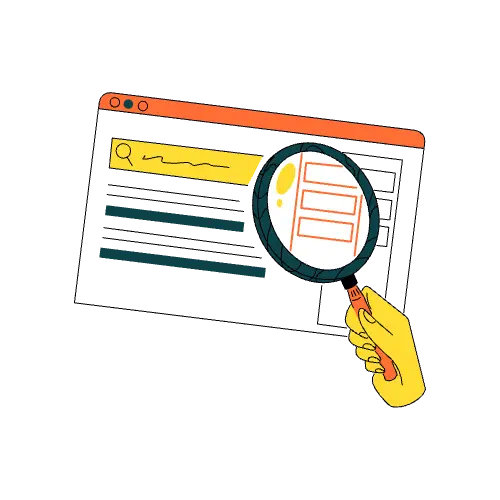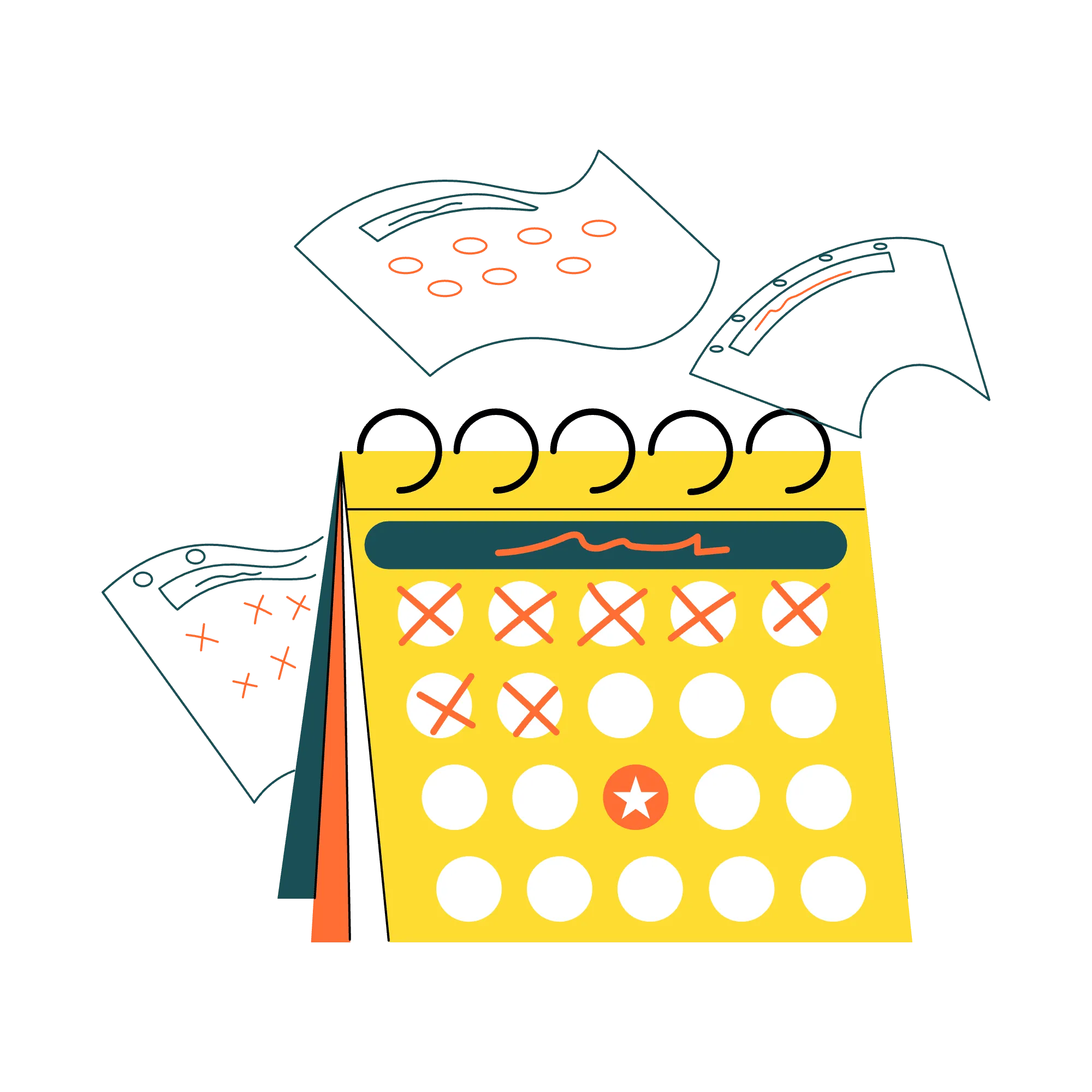Growth comes from 12 interconnected metrics
12 metrics feed the 4 engines above and, taken together, set revenue. Whether you're aware of them or not, these numbers already run your funnel.
Think of them as a world map of growth: with this overview, it's much easier to find your way through B2B growth. Many of the 1,500 marketers I've trained, tell me the model helps them to get an overview of growth.
.png)
The magic of compound growth
Lift all 12 metrics with 10% and something magical happens: the results don't just add up (120%), but they multiply (214%). In simple terms: you get growth for free.
This is called compound growth. This is the same as compound interest on your savings account. Even Einstein admired it's power:
Compound interest is the eighth wonder of the world. He who understands it, earns it ... he who doesn't, pays it.
Albert Einstein
Apply the same maths to your funnel and 12 small improvements turn into 214% growth. Who doesn't want free growth?
.svg)
Drive more traffic from the same budget
Build your channel strategy and optimise each channel, so you grow traffic strategically without burning budget.
Outreach automation

Build an outreach strategy that defines who to target and why. Configure infrastructure properly, build targeted lists, write emails that sound human, and design sequences that convert.
LinkedIn thought leadership

Optimise your profile to convert visitors into leads. Build a content calendar, write posts that drive action, and time publishing to maximise reach and engagement.
Organic search

Define your organic strategy with clear traffic goals. Build a content workflow, create content that educates and converts, and optimise for both search engines and AI tools.
Skills you learn
Channel plan and budget
Analyse which channels drive revenue and build a 12-week plan that concentrates budget where it compounds over time.
Ad creative testing
Set up frameworks to audit creative, copy, and messaging. Small improvements stack into better clicks and lower costs.
Landing page conversion redesigns
Redesign key landing pages to convert more traffic without needing more visitors. Better conversion multiplies results downstream.
Channel selection by growth stage
Know which channels to use at each phase. Stop guessing where to allocate budget and when to activate new channels.
A funnel that drives qualified discovery calls
Your website, email flows, and remarketing all work together like a mousetrap. Build clear landing pages that convert, automation that nurtures leads, and a machine that drives discovery calls without you chasing people. Stop leaking leads halfway through.
Customer research

Uncover specific pain points, validate assumptions, and reveal what actually drives buying decisions. Run research that produces actionable insights, not just interesting quotes.
Lead capture system

Capture visitor contact details through strategically placed forms, lead magnets, and often-forgotten sources. Build a system that turns anonymous traffic into known leads.
Lead nurture sequences

Nurture leads through automated email flows that educate, build trust, and move prospects toward booking a discovery call when the timing is right for them.
Optimised booking flow

Convert interested leads into booked meetings through confirmation flows, reminder sequences, and cancellation handling that maximise show rates and reduce no-shows.
B2B website foundations

Most B2B websites confuse visitors instead of converting them. Build clear pages that answer questions, establish credibility, and make the next step obvious.
Suggested tools
Skills you learn
Lead capture systems
Reduce form fields and build multi-step forms that capture more leads without friction or dropoff keeping prospects engaged.
Lead nurture email sequences
Build automated sequences that educate and qualify leads. By the time sales calls, prospects are interested and ready.
Optimised booking flow
Optimise booking flow, set up reminder automation, and build confirmation sequences that get more meetings scheduled consistently.
Lead scoring setup
Configure scoring that identifies which leads are ready to talk to sales and which need more nurturing first.
Help your sales team close more deals
Your sales pipeline works exactly like a marketing funnel, you just need to know how to optimise it. Build the assets that help your team close: proposals that win, workflows that keep deals moving, and materials that answer objections before they kill opportunities.
Discovery calls

Qualify prospects and uncover needs through structured discovery conversations that build trust, surface pain points, and position your solution as the obvious choice.
Sales sequences

Keep deals moving forward with automated outreach cadences, task reminders, and nurture sequences that prevent qualified leads from going cold or slipping through the cracks.
Proposal templates

Close qualified opportunities with proposal formats that clearly communicate value, address objections before they arise, and make buying decisions straightforward.
Sales hub configuration
This playbook is for sales reps who need to configure their HubSpot account for daily pipeline management, deal tracking, and customer communication. Learn how to set up your personal workspace, manage your pipeline effectively, log activities consistently, book meetings efficiently, and track your performance. By the end of this playbook, you'll have a fully configured HubSpot account that helps you close more deals faster.
Suggested tools
Skills you learn
Discovery call scripts
Build call structure and question banks that help your team run better discovery calls and qualify prospects consistently.
Proposal templates that close deals
Create modular proposal templates with strong positioning. Clear structure that answers objections before prospects ask them.
Pricing page and value presentation
Design branded pricing presentation with value justification framework that makes the decision easier for prospects on the fence.
Sales sequences and follow-up automation
Build automated follow-up flows that keep deals moving. Nurture prospects between calls so opportunities don't go cold.
Increase lifetime value per customer
Acquiring customers is expensive. Keeping them is where margins improve. What would happen if none of your customers left? Build feedback loops, long-term relationships, retention programmes that reduce churn, and upsell frameworks that grow account value without being pushy.
Retention strategy

Retain customers longer by identifying at-risk accounts early, addressing concerns proactively, and continuously demonstrating value that prevents churn before it happens.
Expansion

Expand account value through systematic identification of upsell opportunities, properly timed offers, and clear presentations of additional value customers actually want.
Increase pricing

Increase prices without losing customers by communicating value clearly, segmenting appropriately, and timing increases to minimise churn whilst improving margins.
Skills you learn
Client onboarding that creates loyalty
Design onboarding experiences that activate clients quickly and keep them happy. First impressions determine long-term relationships and retention.
Retention strategy to reduce churn
Identify best clients and rebuild approach to attract more like them. Stop taking anyone who pays money.
Upsell and cross-sell strategy
Build frameworks that identify opportunities and action them. When clients are ready for more, your team knows what to offer.
Pricing increase tactics
Analyse pricing structure and create implementation plan for increases. Grow account value without feeling pushy or aggressive to clients.
Orchestrate systematic growth
Get a grip on what's actually working and what needs course correction. Use data and experiments to make decisions instead of opinions. See how changes in one part of the system affect everything else. Random tactics don't compound, coordinated ones do.
Quarterly strategy
%2520(1).webp)
Run quarterly business reviews that assess current state, set ambitious but realistic goals, build actionable roadmaps, and define key results that keep everyone aligned.
Monthly review

Analyse monthly performance data across all four growth engines. Identify what is working, what is not, and make tactical adjustments using a structured decision framework.
Weekly scorecard

Set up and run the weekly 12-metric review across all four growth engines. Structure the meeting, assign ownership, use traffic lights, and escalate issues that need attention.
Experimentation

Run tests across all growth engines using proper hypothesis formation, test design, and statistical significance. Build learning loops that compound improvements over time.
Automation
.webp)
Identify repetitive tasks draining time and build workflows that run without you. Use HubSpot and Zapier to automate lead routing, follow-ups, notifications, and data entry.
Suggested tools
Skills you learn
Data-driven decision making, not gut feel
Identify which metrics predict growth and build dashboards that surface the right insights. Know what to focus on next quarter.
Prioritise experiments based on long-term revenue
Learn how to design experiments with clear hypotheses and success metrics. Every test teaches you something whether it wins or loses.
Culture of improvement across your team
Train your team to think like experimenters. Small improvements from everyone compound into major growth over months and years.
System to accelerate results with each cycle
Structure how you learn from experiments and build on wins. Each cycle gets faster as your team gets better at spotting what works.
Since 2010, I've used this system to drive results for my own companies and clients
For 15 years, I've been building growth machines that drive predictable revenue. I've done it for my own businesses and for B2B companies across different industries. Now you can learn how to build it yourself, or let me build it for you.
FAQ
Why 214% growth instead of just 120%?
Because the 12 metrics multiply, not add. If you improve one metric by 10%, you get 10% growth. But when you improve 12 interconnected metrics by 10% each, they compound: 1.10 × 1.10 × 1.10... (12 times) = 3.14x your baseline, which is 214% growth. This is why systematic improvement across the entire customer journey beats isolated tactics.
Do I need to improve all 12 metrics to see results?
No. Improving any metric moves the needle. But growth compounds fastest when you fix multiple bottlenecks simultaneously. One 10% improvement gives 10% growth. Three improvements give 33%. Six give 77%. All twelve give 214%. The framework shows which metrics to prioritise based on where you're weakest.
How do I know which metrics to focus on first?
Start by measuring your baseline across all 12 metrics. Your biggest bottleneck becomes obvious quickly - usually one metric is dramatically worse than others. Fix that first for immediate impact, then work systematically through the rest. The framework page shows how each metric connects, so you understand what breaks downstream when one part fails.






.jpeg)
.jpeg)


%20(1).jpeg)



.jpeg)